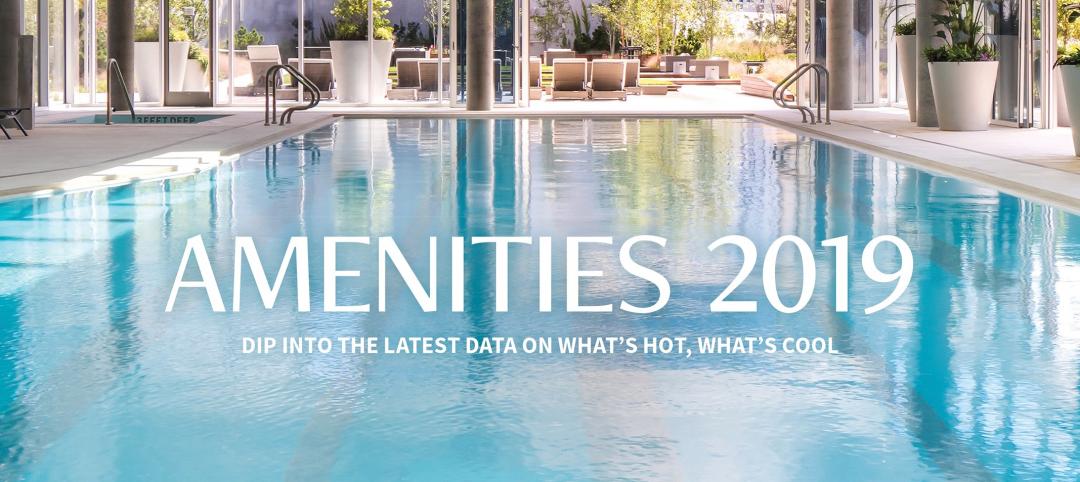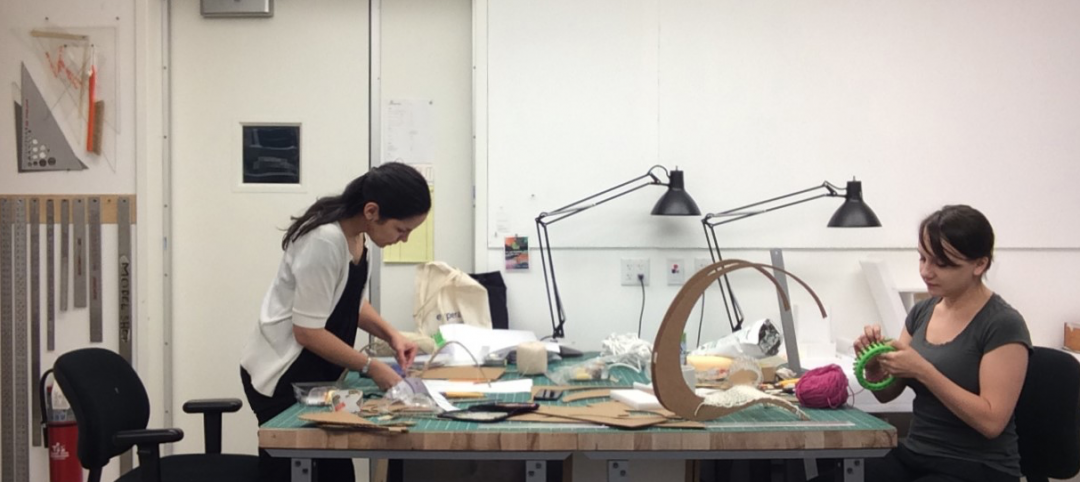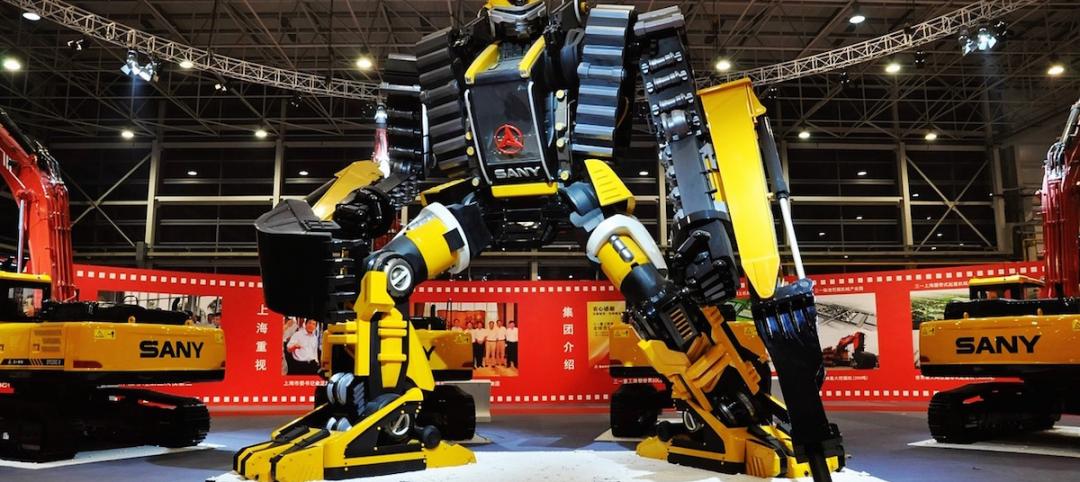Building Design+Construction's new conference and expo, BUILDINGChicago, kicks off in two weeks. The three-day event will feature more than 65 AIA CES and GBCI accredited sessions, on everything from building information modeling and post-occupancy evaluations to net-zero performance and LEED training.
This is a must-attend event for any AEC professional who lives or does work in the Midwest, especially for those interested in education and training. Why? Because the show is built on having the highest-quality continuing education content from some of the industry's brightest minds and most prominent firms.
The BD+C editorial team will be there en masse to take in as many sessions as time permits. Of the 65+ topics, 13 in particular piqued my interest. Here are my "must-see" educations sessions at BUILDINGChicago:
1. Adaptive Reuse as Sustainable Development - Strategies for Blending Historic Structures, Sustainability, and Revitalized Communities - Monday, September 9, 2013 - 9:30 AM to 10: 30 AM
This session will explore the integration of sustainable design strategies into existing historic buildings through the case study of the Morris B. Sachs Building, a vacant landmark 1929 Art Moderne flatiron structure in Chicago that was adaptively reused into the LEED Gold Hairpin Lofts mixed-use development, with 26 affordable housing units, a neighborhood arts center, and retail spaces. Presenters will discuss why reuse of existing buildings is the ultimate in sustainable development; how to assess the economic and physical viability of existing buildings for adaptive reuse; and how integrative design can enhance the building performance of historic structures. Presenters: Paul Alessandro, Hartshome Plunkard Architecture; Sachin Anand, dbHMS
2. Post-occupancy Performance of LEED-Certified Buildings in Minnesota: A Statewide Analysis - Monday, September 9, 2013 - 11:00 AM to 12:00 AM
Energy-efficiency metrics are impacting more than just LEED certified buildings. Several cities, notably Seattle, New York, and Washington, D.C., have widened benchmarking requirements to include annual energy disclosure from private-sector buildings, in some cases for buildings as small as 10,000 square feet. This program will present the findings from the USGBC Minnesota Chapter's Performance Metrics initiative, which evaluated energy and water consumption in 56 LEED-certified buildings in Minnesota. The panel will present the factors affecting a building's benchmark to promote better understanding of why similar types of buildings can have dramatically different energy performance. Presenters: Peter Dahl, Sebesta Blomberg & Associates; Priscilla Koeckeritz, Mike Williams, EnergyPrint
3. Verification of Sustainable Building Envelopes Through Building Enclosure Commissioning - Monday, September 9, 2013 - 1:30 PM to 2:30 PM
One way to achieve high-performing and sustainable building enclosures is through building enclosure commissioning. Although still in its infancy, BECx is becoming accepted as the norm rather than the exception in LEED. The recent release of the new ASTM BECx standard has improved the process of specifying and implementing a successful BECx program. The seminar will discuss the components of a BECx program in relation to the new ASTM standard, LEED requirements, and other standards and jurisdictional requirements. The presentation will offer case studies highlighting what clients and end users should look for in a typical BECx program. Presenter: Brian Erickson, Pie Consulting and Engineering
4. An Introduction to the Passive House Standard - Monday, September 9, 2013 - 2:45 PM to 3:45 PM
The Passive House Standard is the highest building efficiency standard in the world, with the promise of reducing the energy consumption of buildings by up to 80%. When coupled with renewable energy systems, Passive House is the imperative starting point to any net-zero energy building project. This presentation will cover the history of the movement; the ingredients that go into making a passive building; the new tools available to green designers to make educated decisions on energy-efficiency design; case studies of passive buildings in the US and abroad; and how to become a Certified Passive House Consultant, PHIUS Certified Builder, or PHIUS Certified Energy Rater Program connected to RESNET. Presenter: Mark Miller, Passive House Alliance United
5. Sound, Hearing, and the Built Environment - Listening for Better Architecture - Monday, September 9, 2013 - 4:15 PM to 5:45 PM
Thirty million Americans suffer from hearing impairment of one kind or another. This course will explore the importance of our sense of hearing to our well-being in and around the built environment. Beginning with an accessible discussion of hearing physiology and exploration of the environments in which our hearing works best, the expert panel will look into the body of evidence regarding the effect of acoustics and noise on our cognitive abilities and stress levels. A brief history of architecture, acoustics, worship, and culture will lead to concluding thoughts on a modernism with aural environments that are responsive to our health, cognition, and well-being. Presenter: Carl Giegold, Threshold Accoustics, LLC
6. Net Zero Energy Buildings In Midwest Climates - Monday, September 9, 2013 - 6:00 PM to 7:30 PM
Trends in net zero energy legislation and projects and the sensible means and methods to get to net zero will be analyzed, along with case studies of both commercial and residential ZNE projects in the Midwest. Panelists will demonstrate how achieving net-zero in commercial buildings generally follows a two-step process: first, an intense focus on designing the building to be as energy efficient as possible, followed by a second step that involves the consideration of renewable energy sources such as solar, wind and biomass. The presentation will show how life cycle costing techniques can be a useful tool to justify going toward net zero. Presenters: Manus McDevitt, Sustainable Engineering group, LLC; Sherrie Gruder, University of Wisconsin Extension
7. Using New Construction to Inspire Energy Retrofits: Comparing Two Projects at Loyola University Chicago - Tuesday, September 10, 2013 - 8:30 AM to 10:00 AM
This panel will utilize Loyola University's Lakeshore Campus in Chicago as a laboratory to discuss how lessons from the design and construction of Cuneo Hall, a new high-performance academic building achieving a 62% energy performance improvement, will be applied to the retrofitting of Dumbach Hall, an underperforming structure built in 1908. The two buildings are similar in layout, size and use. Dumbach Hall was renovated in 2006 with new lighting systems and HVAC equipment – relatively easy, initial-step energy-efficiency retrofits. The project team will present the methodology and results for achieving 30% energy performance improvement beyond Dumbach’s 2006 retrofits, based on their experience with Cuneo Hall. Presenters: Leah Guzowski, Argonne National Laboratory; Mike Stopka, Solomon Cordwell Buenz; Kana Wibbenmeyer, Loyola University Chicago
8. An Owners Experience with BIM: The Crate and Barrel Story - Tuesday, September 10, 2013 - 10:30 AM to 12:00 PM
With 10 years of BIM experience as an architect and owner, John Moebes, Director of Construction at retailer Crate & Barrel, will describe aspects of BIM that have worked well and some that have not. Case studies from projects throughout the U.S. and Canada will be analyzed. Attention will also be given to the unique needs that property owners encounter when using BIM software and directions that owners may take BIM not encountered in architecture and construction. Moebes is recognized leader in the use of online project management tools, BIM, and digital document review to improve project performance. Presenter: John Moebes, Crate & Barrel
9. Managing the Liability Risks of Sustainable Design: Advice from the Experts - Tuesday, September 10, 2013 - 2:15 PM to 3:45 PM
This interactive program will enable participants to identify and manage the risks of sustainable design. Many of these risks can be addressed with skills design professionals already use to manage the risks of professional practice, including setting appropriate client expectations, good documentation, avoiding uninsurable guarantees, and doing appropriate due diligence when specifying products, especially new ones. The expert panelists will take a fresh look at these "old" tools in the context of sustainable design, with an eye toward minimizing problems and claims. Relevant parts of the AIA D503-2011 and the new AIA Sustainable Projects series of contracts will be discussed and used as examples. Presenters: Karen Erger, Lockton Companies; Eric Singer, ICE Miller LLC
10. Integrating Environmental Analysis into BIM Workflow: Utilizing the HOK Design Analysis Methodology - Tuesday, September 10, 2013 - 4:00 PM to 5:30 PM
The panel will present a new Design Analysis Methodology that builds appropriate environmental analysis, including energy and carbon modeling, into all stages of project design, even into post-occupancy. They will describe a process that uses BIM to streamline delivery in order to minimize energy demand and improve comfort while maintaining design integrity. Case studies will show how these improved design processes have delivered exceptional performance results across a range of real-life projects. Through a shift from the conventional linear design and delivery process to a multidisciplinary and interrelated method, the process allows designers to adjust energy forecasts to include the likely impact of user behavior. Presenters: Colin Rohlfing and Dave Ivey, HOK; Peter Marchese, Microdesk; Boyd Black, University of Chicago
11. Transforming Medicine at the Community Level: Creating a Healthcare based Mixed-Use Development in Southwest Chicago - Wednesday, September 11, 2013 - 10:00 AM to 11:30 AM
Healthcare delivery will change significantly over the next 15 years, as providers focus on efficiency, productivity, flexibility, quality, education, and community engagement. One response to this change is "community-centric" delivery, which promotes health, wellness, and health education while improving the urban setting and social opportunities in a given community. Chicago Southwest Development Corporation and Saint Anthony Hospital have planned for such a financially self-sustaining campus. This presentation will discuss key themes that are shaping care delivery; examine how to use research to develop new care delivery models; and explore how one organization is effecting change to meet the healthcare and economic needs of its community. Presenters: Abigail Clary, HDR; Guy Medaglia, St. Anthony Hospital and Greater Southwest Development Corporation
12. Assessing Building Energy Costs: The Benefits of Energy Modeling to Building Owners - Wednesday, September 11, 2013 - 1:00 PM to 2:30 PM
This session will focus on the use of energy modeling to prioritize improvements that are most likely to reduce a building owner’s utility bill over time. Attendees will learn: What a building energy model is. Useful information an energy model can provide to aid decision making. Reasons to do a building energy model. How to select an energy modeler. Information exchange between the energy modeler and the building owner. How to use energy modeling results in an economic analysis. How utilities support energy modeling to aid decision-making. Case study: How a university values energy modeling for future planning. Presenters: Keith Schwartz, Energy Center of Wisconsin; Sandra Hall Henry, Commonwealth Edison; Sumit Ray, University of Chicago
13. Supertall Buildings: The Evolution of Architecture + Structural Design in the Next Generation of the World's Tallest Buildings - Wednesday, September 11, 2013 - 3:00 PM to 4:30 PM
The session will address how architecture and structural design evolved to shape the next series of the tallest buildings in the world, including the Wuhan Greenland Center Main Tower, in China. Panelists will explain the reasons behind the form and configuration of the many different elements that shape the towers and how these decisions have structural and architectural implications. Constructability and Logistical Considerations for super-tall buildings, as well as structural optimization as part of the design process for super-tall towers, will also be discussed. Presenters: Juan Betancur, Alehandro Stochetti, Adrian Smith + Gordon Gill; JianHai Liang, John Peronto, Thornton Tomasetti
For more on BUILDINGChicago, including registration details, visit the show's website.
More from Author
David Barista | Aug 15, 2019
3 ‘Giant’ AEC market trends for 2019-2020
We’re starting to see a shift toward custom research, thanks in part to the influx of data, data tools, and analytics expertise in the AEC market.
David Barista | Jul 31, 2019
Amenities war no more? Research report explores multifamily market
Multifamily developers show no signs of pulling back on specialty spaces and unique offerings in an effort to attract high-quality tenants, according to new research from Multifamily Design+Construction.
David Barista | Dec 30, 2016
An open letter to the AEC C-suite
Women AEC professionals need you to take action.
David Barista | Sep 6, 2016
Innovation intervention: How AEC firms are driving growth through R&D programs
AEC firms are taking a page from the tech industry, by infusing a deep commitment to innovation and disruption into their cultural DNA.
David Barista | Jun 27, 2016
If ‘only the paranoid survive,’ what does it take to thrive?
“Sooner or later, something fundamental in your business world will change.” The late Andrew Grove (1936-2016), Co-founder of tech giant Intel Corp., lived by these words.
David Barista | May 31, 2016
As commercial buildings get ‘smarter,’ concerns rise over cybercrime
As buildings become increasingly connected, opportunistic hackers have countless avenues into a building’s network.
David Barista | May 9, 2016
Is the nation’s grand tech boom really an innovation funk?
Despite popular belief, the country is not in a great age of technological and digital innovation, at least when compared to the last great innovation era (1870-1970).
David Barista | Mar 31, 2016
Deep Learning + AI: How machines are becoming master problem solvers
Besides revolutionary changes to the world’s workforce, artificial intelligence could have a profound impact on the built environment and the AEC industry.
David Barista | Feb 24, 2016
Is the booming freelance economy a threat to AEC firms?
By shifting the work (and revenue) to freelancers, “platform capitalism” startups have taken considerable market share from traditional businesses.
David Barista | Jan 26, 2016
How the Fourth Industrial Revolution will alter the globe’s workforce
The next great technological metamorphosis will be unlike anything humankind has experienced before, due to the sheer size, speed, and scope of disruption.
















